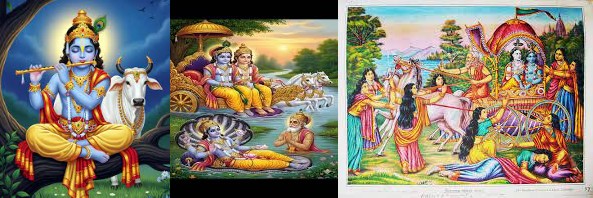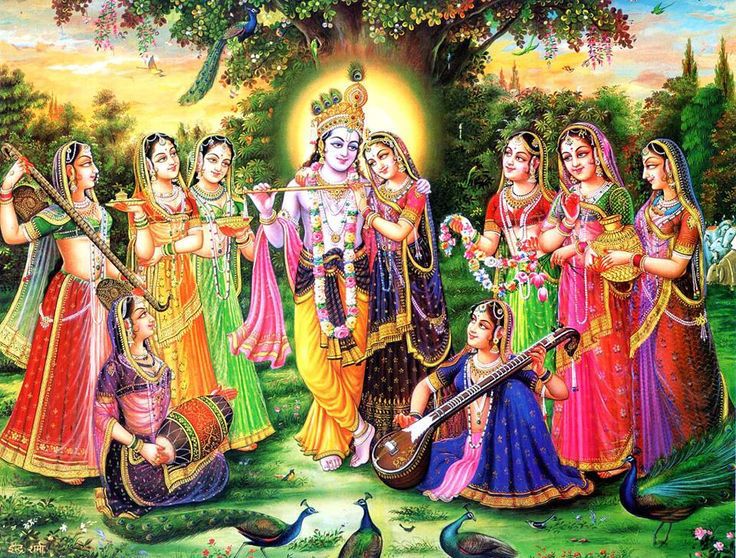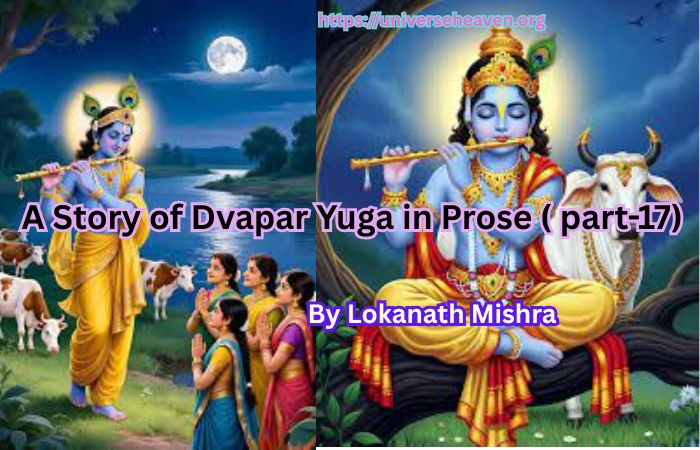A Story of Dvapar Yuga in Prose ( part-17)
By Lokanath Mishra
The Histories of Mathura and Hastinapur
We have already gone through that after years of growing up under the loving care of Nanda and Yashoda in Gokul, the divine brothers Krishna and Balaram were taken to Mathura by their uncle Akrura. There, they fulfilled destiny by slaying the tyrant king Kamsa, who had long oppressed the Yadavas and spread fear across the land. The people of Mathura rejoiced, for dharma was restored once again.

Under the guidance of Sage Sandipani, Krishna and Balaram devoted themselves to learning the sacred Vedas, martial arts, the science of statecraft, and the divine knowledge of the self. Their brilliance outshone all others — for though they were young princes, they were born of divine purpose. Upon completing their education, they returned to Mathura, ready to serve and protect dharma.
But before we journey further with Krishna and Balaram, let us turn our gaze toward another great kingdom of ancient Bharat — Hastinapur, the seat of the Kuru dynasty — whose history shaped the destiny of the entire world.
The Birth of the Princes of Hastinapur

Many years before Krishna’s time, the great King Shantanu ruled Hastinapur with wisdom and strength. His son Bhishma, the mightiest of warriors and purest of souls, had taken a terrible vow of lifelong celibacy to preserve his father’s happiness and protect the Kuru throne. Yet, that very vow would later cast a shadow over the future of the dynasty.
After Shantanu’s son Vichitravirya died childless, the kingdom faced ruin. His mother, Queen Satyavati, was stricken with sorrow — not only for her sons, but for the possible end of the Kuru line. In desperation, she turned to Bhishma.
“O son,” she said, “for the sake of our ancestors, you must give heirs to your brother’s widows, Ambika and Ambalika.”
But Bhishma bowed deeply, saying, “Mother, though your command is sacred, I cannot break my vow. Even if I renounce heaven itself, I shall never renounce my word.”
Satyavati’s heart trembled, for she knew that without heirs, Hastinapur would fall into darkness. Then she remembered her firstborn — Sage Vyasa, the son of Rishi Parashara, born of divine union on the banks of the Yamuna. Summoning him through her thoughts, she said, “My son, the Kuru race stands on the brink of extinction. Only you can save it.”
Vyasa bowed to her will. “So be it,” he said. “I shall give sons to the widowed queens — but they must accept me as I am: unkempt, ascetic, and radiant with spiritual power.”

That night, Ambika, the elder queen, awaited Vyasa. When the sage appeared in his austere form, she was terrified and closed her eyes. Vyasa later told his mother, “A son will be born with the strength of ten thousand elephants — but blind, for his mother would not open her eyes.”
Thus was born Dhritarashtra, strong but sightless.
Next, Vyasa went to Ambalika, the younger queen. She too trembled, her face turning pale with fear. “Her son,” Vyasa said, “shall be fair in complexion but weak in body.”
That son was Pandu, the pale one, destined to father the noble Pandavas.
Still fearing the end of the lineage, Satyavati asked Vyasa once more to conceive a child. But Ambika, unwilling to face him again, sent her gentle maidservant Parishrami in her place. The humble woman received Vyasa with respect and calm. Pleased, the sage said, “Your son shall be righteous and wise beyond measure.”
Thus was born Vidura, the incarnation of Yama, lord of justice, cursed to live among men.
And so, through Vyasa’s grace, three sons came into the world — Dhritarashtra, Pandu, and Vidura — the pillars upon which Hastinapur’s destiny would rest. One was born with strength but no sight; one with fairness but frailty; one with wisdom but no claim to the throne.
From them arose two mighty lineages — the Kauravas and the Pandavas — whose rivalry would one day shake the earth and summon Krishna himself to guide mankind toward righteousness.
The Meeting of Destinies

Thus, while Krishna and Balaram completed their sacred education in Mathura, mastering knowledge and valor, the seeds of destiny were already sown in Hastinapur. The blind prince Dhritarashtra, the pale king Pandu, and the wise Vidura were shaping the political and moral foundation of Bharat.
The paths of Mathura and Hastinapur — of Krishna and the Kurus — were destined to meet, for when adharma rose again upon the earth, it would be Krishna, the divine protector, who would steer the Kuru princes toward their fated war — the great Mahabharata, where truth and righteousness would stand their ultimate test.
( to be continued)
The Sacred Tradition of Gosani Jatra in Puri (Part–3)
The Story of Lord Venkateswara – The Eternal Protector of Tirumala
The Divine Lotus of Tiruchanoor – The Story of Goddess Padmavathi Devi

